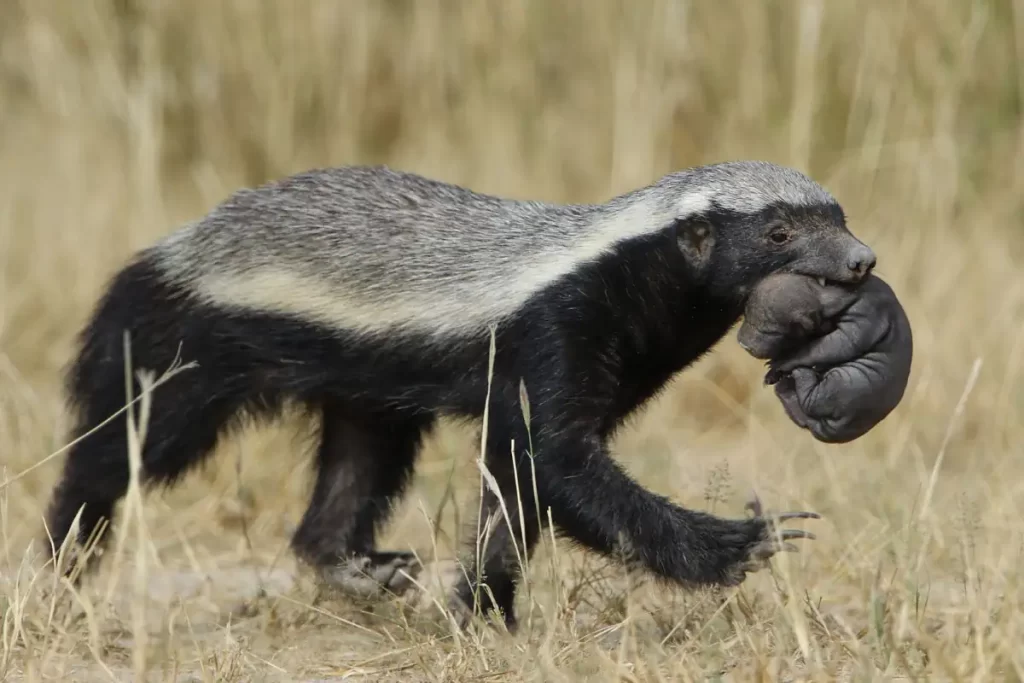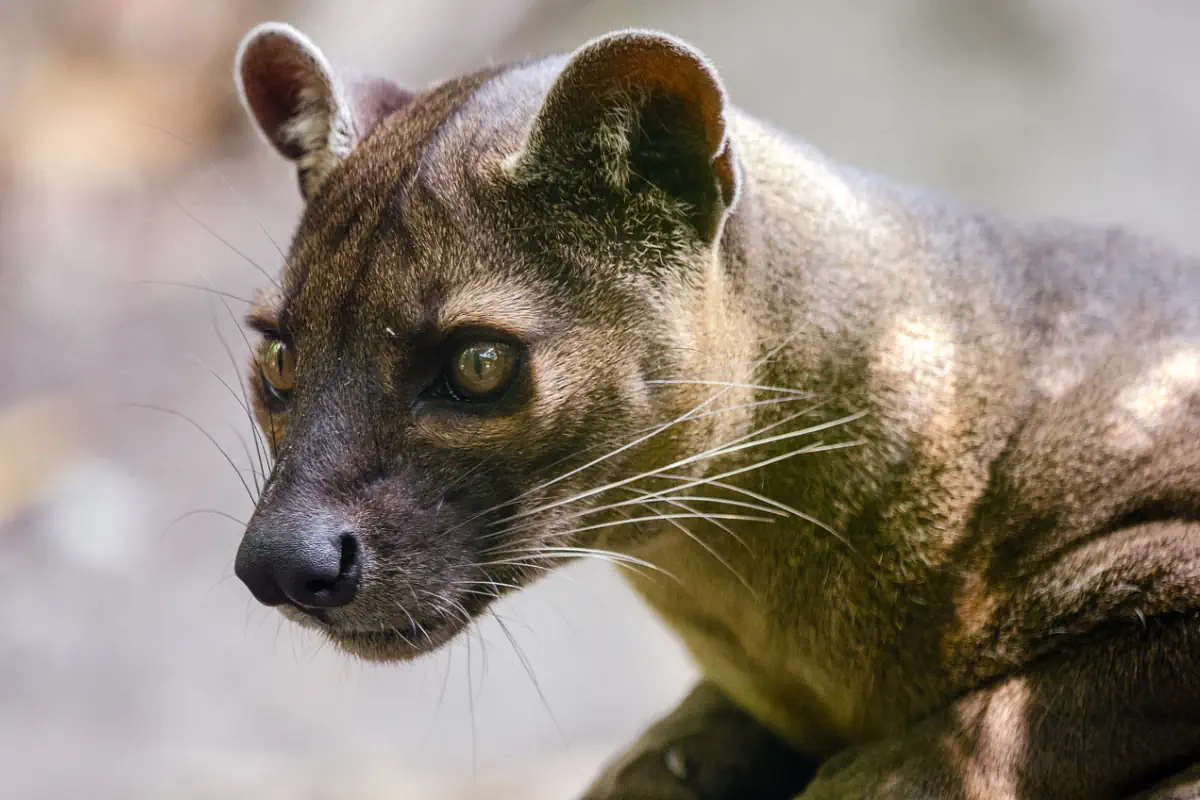The fossa (Cryptoprocta ferox) is a carnivorous mammal that is endemic to the island of Madagascar. It is a member of the Eupleridae, a family of carnivorans closely related to the mongoose family Herpestidae. They look like a cross between a dog, a cat, and a mongoose. Here are 10 amazing fossa facts.
1. Its scientific name means “hidden anus”
The fossa’s genus name, Cryptoprocta, comes from the fact that its anus is concealed by the anal sacs (small glands near the anus in many mammals, including dogs and cats). It is a Greek term that combines the words secret (crypto) and anus (procta).
The fossa’s species name, ferox, alludes to the animal’s overblown reputation for violence.
2. They are usually twice the average housecat size
The male fossa is slightly larger than the female. They can reach a length of about 28-31 in (70-80 cm). Their tails can be almost a meter long.
Their weight is in females, 12 to 15 pounds (5.5 to 6.8 kilograms); in males, 13 to 19 pounds (6.2 to 8.6 kilograms).
3. Fossas communicate using sounds, smells, and visual signals
Vocalizations can include muttering, a threatening call, and a decoy call consisting of “repeated loud, rough inhalations and gasps for breath”.
Throughout the year, animals use the glands in the anal region and chest to leave long-term remnants of odors on rocks, trees, and the ground.
They also communicate using facial and body expressions, but the significance of these signals is unclear.
4. They are Madagascar’s biggest predators
The fossa, an extreme predator of Madagascar, hunts both during the day and at night and is able to catch prey both on the ground and in the tree.
Lemurs make up the bulk of their diet, but it also eats small mammals, fish, lizards, birds, frogs, and insects.

5. They have an interesting way of mating
The female stands at the top of a tree, and the males, competing for the right to mate, gather under it.
They can choose to mate with several candidates, but each mating lasts several hours.
This long mating is due to the backward-facing spines on the male’s penis, which causes a mating bond that is difficult to break.
The same trees are often used every year. The fact that a female chooses her mates by monopolizing a mating dec is unique among carnivores.
6. Cubs are born blind and toothless
They usually give birth to 2-6 cubs. Babies are weaned after 4.5 months and are independent after a year.
Sexual maturity occurs around the age of three to four years, and life expectancy in captivity is 20 years.
7. They are fast
The fossa is a speedy runner. A Fossa can travel at speeds of up to 35 miles per hour.

Related: The fastest land animals
8. Female fossas can change their gender temporarily
The female fossa is having a strange stage of development specific to the fossa, known as temporary masculinization during puberty.
It develops an enlarged, pointed sweet spot resembling a male’s genital organ and secretes an orange substance towards the bottom of its abdomen, which is typical only for mature males, meaning that the adult female lacks this feature.
It is not known what purpose this temporary masculinization serves, but according to one theory, it is assumed that this behavior protects young females from harassment by an adult male or aggression by territorial females.
9. They are skilled climbers
Their long, slender tail helps in balance when navigating between trees, and its semi-retractable paw and flexible ankle allow it to move adequately up and down trees.
They use a human-like movement method known as “plantigrade” to walk flat-footed on her toes like a bear. When bouncing from branch to branch, this function adds added balance and agility.
10. People in Madagascar call them the “devil”
Because of their behavior and appearance, people in Madagascar call fossa the “devil”.
There are many legends about this animal, and one of the most popular is about how they kidnap babies at night. Of course, this is not true.

Related: 10 amazing honey badger facts
Sources
- Fossa (animal) on Wikipedia
- Interesting Fossa Facts on Soft Schools website
- Fossa (Cryptoprocta ferox) on the San Diego Zoo website
- Fossa on the National Geographic website
- Sloth Facts: 10 Amazing things about these adorable mammals - August 12, 2022
- 10 Amazing Koala Facts - February 18, 2022
- 10 Amazing Humpback Whale Facts - December 22, 2021
